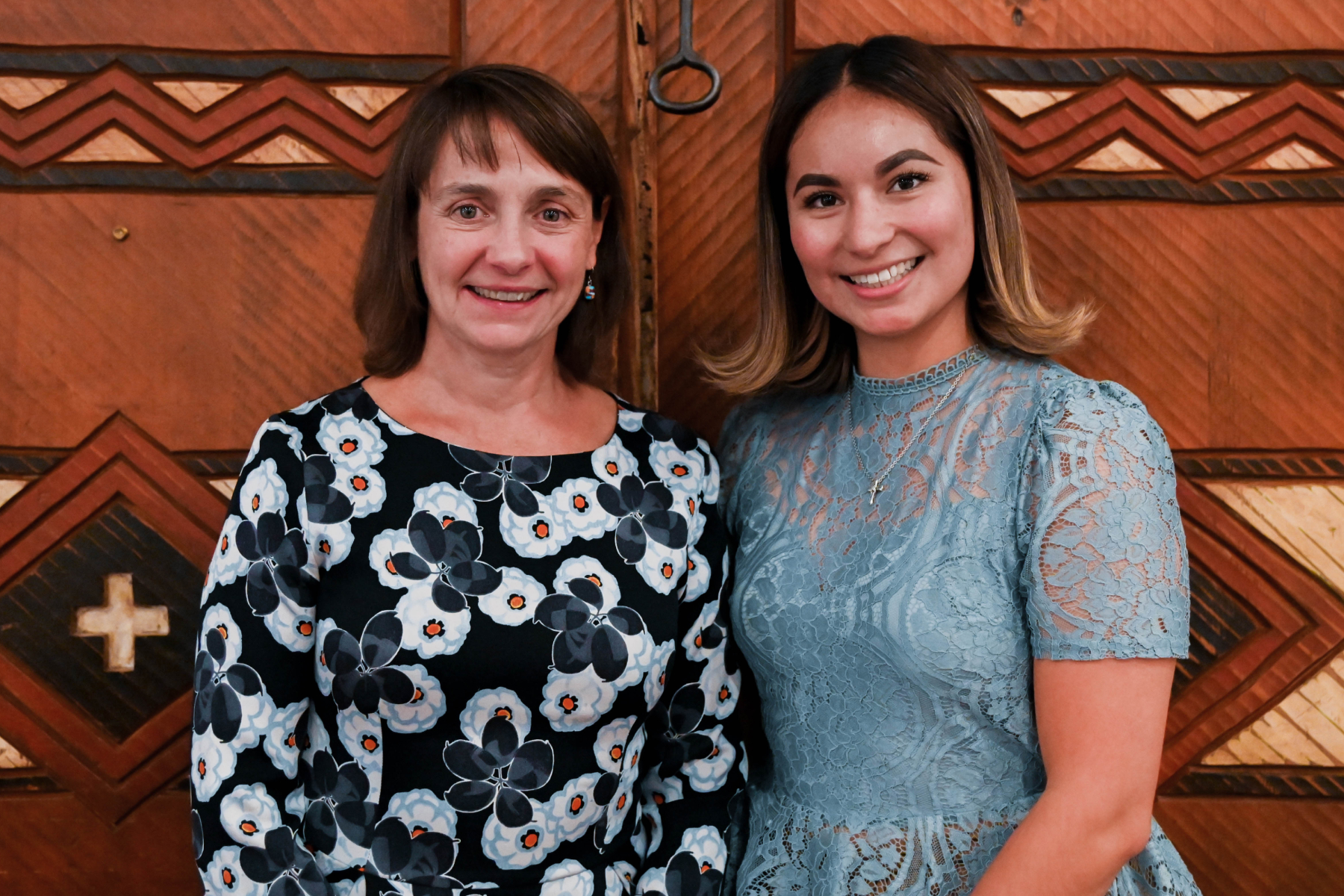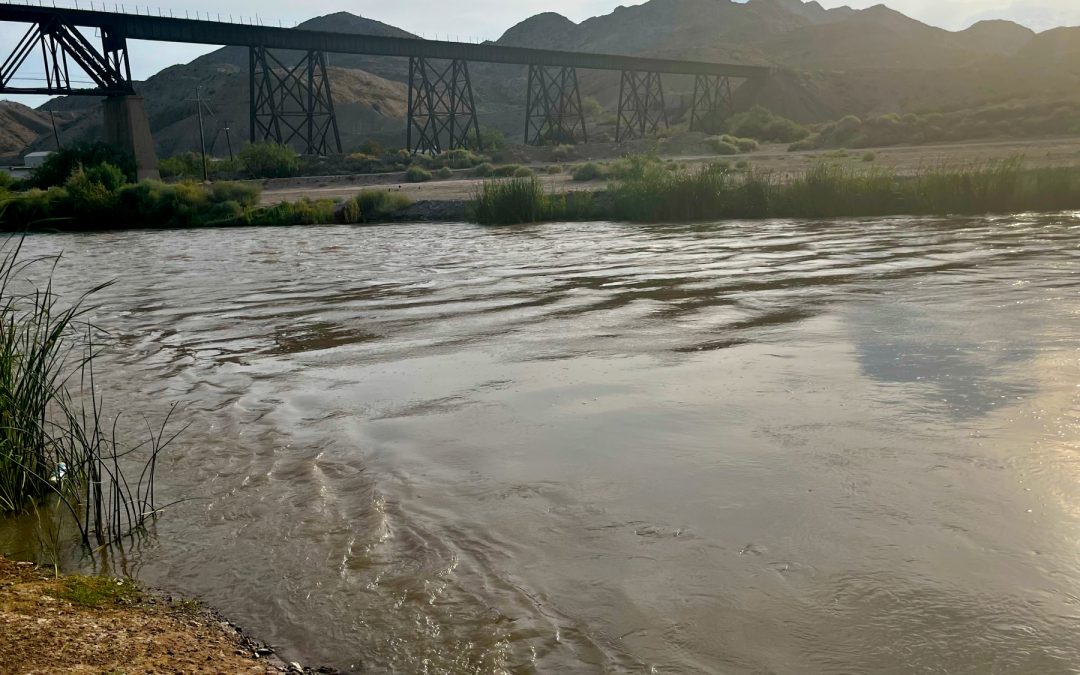Vianey Rueda was in high school the first time she noticed the Rio Grande had nearly gone dry. She was walking across a bridge between El Paso, Texas, where she grew up, and Ciudad Juárez on the way to her father’s farm about two and a half hours south of the border into Mexico—a crossing she had made by foot or car many times throughout her youth—and could never remember seeing the river’s powerful current reduced to the tiniest trickle. When she told her father about it later, she learned that the farm’s reservoir had also been essentially depleted.
“That was my first exposure to water going dry,” she recalls. “Before that, when I was little, it seemed like a normal river. We were used to the faucet turning on, taking long showers. We didn’t think, or have to think, about where our water came from. And over the last 10 years, it’s only gotten worse. The dryness keeps encroaching.”
The Rio Grande lies at the center of a complex web of social, political, economic, and environmental issues. It’s a national border, a hub of trade and immigration, an important ecosystem for cottonwood gallery forests and migratory birds, and a crucial water source for communities and farms along the border, many of which lie in the Chihuahuan desert.
The human history of the river extends as far back as 12 or 13 millennia, but for the last 80 years its use has been governed by the 1944 Water Treaty signed by U.S. President Franklin D. Roosevelt and Mexican President Manuel Avila Camacho, which also determined use of the Colorado River by both nations. Its terms allocate water from the Rio Grande and its tributaries to both countries, including about 76 million cubic feet of water from six Mexican tributaries—roughly one third of their flow at the time of signing—to Texas every five years. The arrangement worked relatively well for several decades, until the passage of the 1992 North American Free Trade Agreement, which increased water demand due to a quadrupling of agricultural trade and expansion of assembly plants along the border. A megadrought in the American Southwest that began in 2000 and continues to this day has also strangled water supply.
That is when sections of the Rio Grande like the one Rueda crossed on her way to see her father began to wither, and Rueda herself began to wonder what could be done about it. That question began a journey that led her to the U-M School for Environment and Sustainability, where she is pursuing a Ph.D. in resource ecology management.
“Growing up, I learned a lot about the changing environment from watching my dad and cousins farming,” she says. “That got me asking questions about how our environmental policies could be exacerbating those negative impacts, and how they could be changed to make things better.”
Muddying the Waters
Rueda began by taking a look at how the 1944 treaty has been implemented and updated along the other river it governs, the Colorado. While the treaty has widely acknowledged flaws—including that it allocates rights to more water than what actually flows through the river—Rueda noted that negotiations around treaty updates affecting the Colorado and corresponding media coverage revolved almost exclusively around questions of water supply and environmental impact. Not so with the Rio Grande.
“The two rivers are going through many of the same problems, but those problems are being tackled in very different ways,” Rueda explains. “As the Colorado River runs primarily through the U.S., ending in Mexico, its management is a more U.S.-centric issue. The Rio Grande, however, is an international border, and the water issues often get lost in news about immigration, narcotics, national security, and border enforcement. But while all that is happening, the water problems are getting worse.”

National flags and eagle statues flank the border between the United States and Mexico at the Amistad Dam, site of one of the major reservoirs along the Rio Grande. Photo by Vianey Rueda.
A perfect example of the divergent treatment of the two rivers, Rueda says, came in summer 2023. While the Colorado River was making headlines about negotiations over protecting both its waters and those of Lake Mead—the reservoir and national recreation area created by the Hoover Dam—discussions of the Rio Grande revolved around a barrier of buoys installed by the State of Texas to deter migrants from crossing the border.
Rueda says some cities along the border—almost always on the American side, where more resources are available—are able to address the diminished water supply in new ways. Her hometown of El Paso has become a leader in the use of treated wastewater and built the largest inland desalination plant in the world. But, she adds, more under-resourced places—usually on the Mexican side—face crisis after crisis. In 2022, the city of Monterrey, Mexico, ran out of tap water entirely, becoming reliant on shipments of water from trucks that quickly became targets of violence. And when Mexico begins accruing deficits, missing its water deliveries under the terms of the treaty, Texas agencies like the Department of Agriculture have advocated for retaliatory measures, like withholding water shipments from the Colorado River, to exert pressure.
The treaty, Rueda realized, needs significant updates, and policymakers need the tools to make them.
Even Flow
Using available historical data on the Rio Grande’s stream volume, Rueda ran multiple simulations of the river’s streamflow at varying levels of dryness to reveal the impact of compliance with the treaty. And by incorporating those simulations into global and regional climate projections, she can begin to project future impacts, as well.

Rueda (right) stands with Tanya Trujillo, former assistant secretary for water and science in the U.S. Department of the Interior, at the inaugural meeting of the Coalition of Rio Grande Water Users in Santa Fe, New Mexico. Photo by Vianey Rueda.
She has also begun a survey of three pairs of border cities, including El Paso and Juarez, to develop an understanding of how those cities cooperate—or not—around water issues, with the idea of seeing how that cooperation could be channeled upward to an international scale.
“We want to understand both what’s happening at the larger scale—politically, socially, economically, and hydrologically—and how the people living on the two sides of the river see each other,” she says. “Elevating this topic with more awareness, more data, and more tools is so important.”
How Rackham Helps
Rueda is a recipient of a Rackham Graduate Student Research Grant, which enabled her to spend time in the communities along the Rio Grande, as well as visit its internationally managed reservoirs and interview staff. Through a Rackham Conference Travel Grant, she was able to present her hydrological findings at the 2023 annual meeting of the American Geophysical Union in San Francisco. She is also a Rackham Merit Fellow.
“Rackham’s support enabled me to conduct my field research and spend time along the river, as well as share my findings,” she says.

